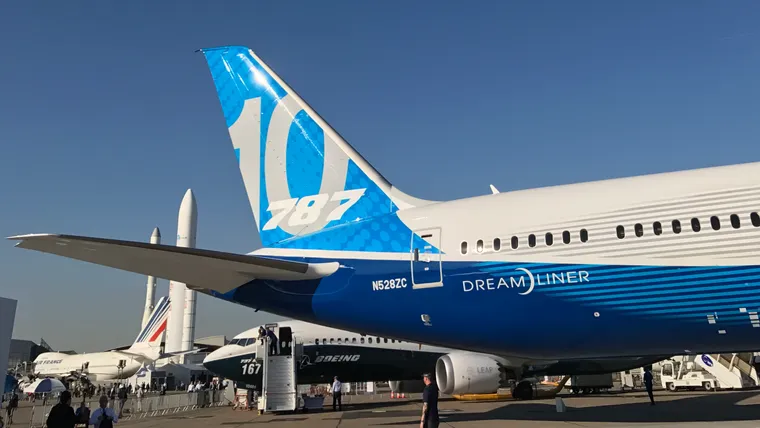Let’s be up front: that this is not the pre-Paris Air Show Boeing feature article we ever wanted to write. With the terrible crash of the 787-8 operating Air India flight AI171 in Ahmedabad this week, of course the first priority of the industry has to be the investigation into its causes, support for its victims, and care for their loved ones.
You won’t find sensationalist coverage or speculation here. That’s not what we’re about. But the crash, the aviation response, the investigation, and the aftermath: all will shape the industry’s annual setpiece event this week, Boeing’s ongoing attempt to right its ship, and the future of the commercial airliner duopoly.
Keeping Boeing chief executive Kelly Ortberg and commercial airplanes chief executive Stephanie Pope away from the show rather than facing customers and the world media is a choice, and Boeing will have to live with the consequences of that choice. Only time will tell whether it was the right one.
Last week, in announcing the airframer’s Paris Air Show plans several days before the AI171 crash, Ortberg said, “We look forward to connecting with our customers and partners at Le Bourget to demonstrate the work underway to restore trust and move Boeing forward.”
We’ll bring you the rest of the analysis we drafted before the AI171 incident, largely as we originally intended, below.
—John Walton, editor in chief
—Gareth Edwards, publisher
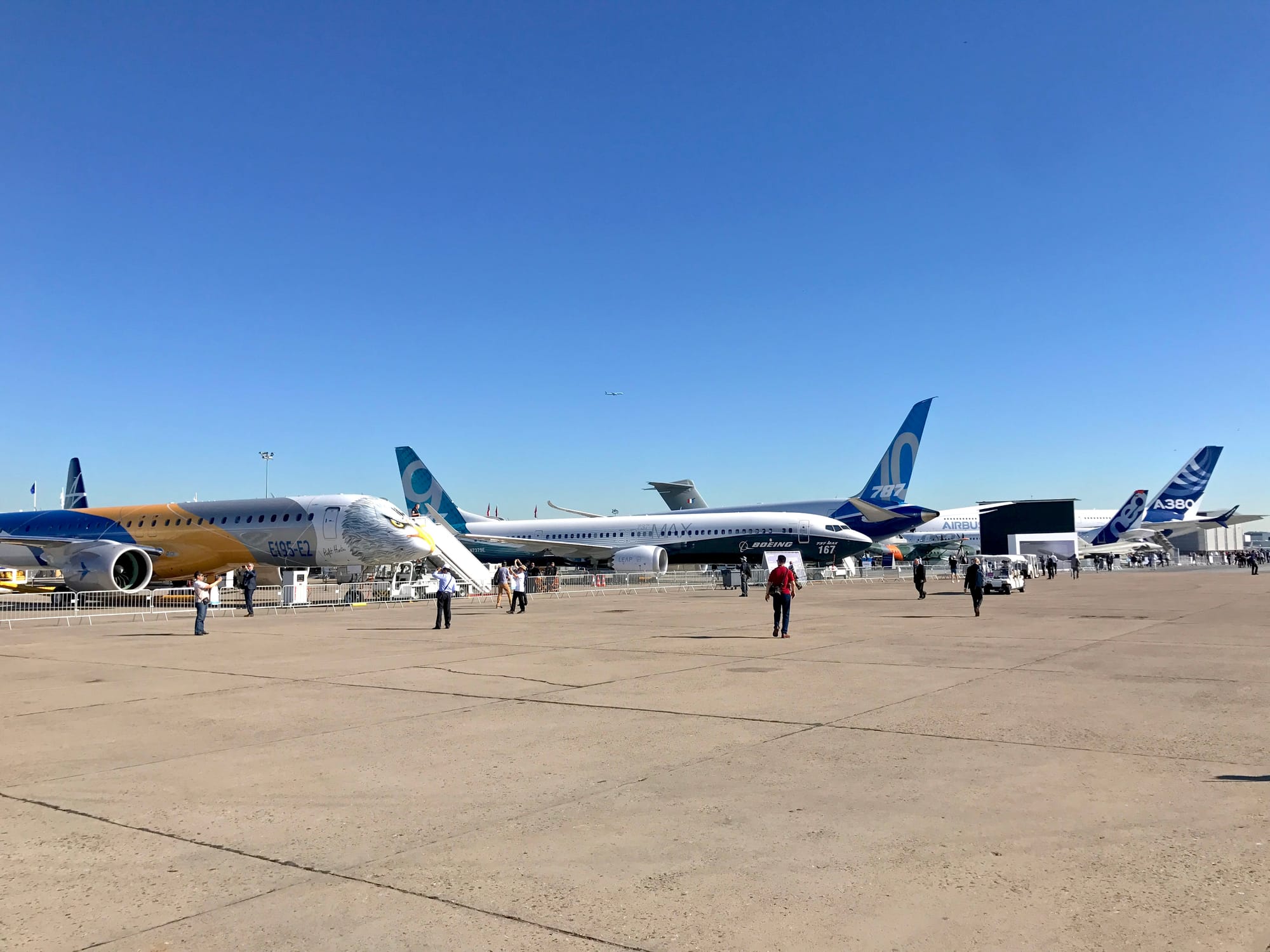
Boeing yet again enters the annual Paris/Farnborough airshow season at a crossroads. Its production capabilities, aircraft development expertise, regulatory restrictions from the FAA, further regulatory relations with overseas certification authorities, its need to walk a fine domestic line with the Trump White House while most of its customers are international airlines — all in uncertain economic times with a background of global conflict and uncertainty — create complexity so intricate it is certainly uncharted, possibly unplottable.
Boeing arrives at the Paris Air Show well behind Airbus in duopoly terms by most key markers where the passenger experience and aircraft production intersect.
In terms of aircraft production, recent green shoots of prospective improvements including having closed out work at the “shadow factory” in Everett for 787 programme rework, fixing the 777-9 engine thrust link problem that halted certification, and finally reaching the production rate milestone of 38 aircraft per month on the 737 MAX line.
On the passenger experience side, Boeing is hamstrung by the 777X delays, although its cabin teams have been making impressive strides to keep momentum up with incremental improvements to what was already an admirable cabin. Boeing’s 777X mockup will be at Le Bourget, and it will be instructive to see what has — or hasn’t — changed in terms of mockup and marketing messages since we saw it in April at the Aircraft Interiors Expo in Hamburg.
Boeing is planning a very light Le Bourget this year in airplane terms
Even before the events of this last week, in terms of Boeing airplanes at the show, the situation was unusually quiet.
The centrepiece is the Qatar Airways Boeing 777-300ER with the special UEFA Champions League football sponsor livery — yet more airplane diplomacy at this year’s show — which arrived early this morning at Le Bourget.
But this isn’t the plane’s first trip to Le Bourget’s static corrals: the registration A7-BED tickled my little grey cells, because it was on show all the way back at the 2017 Paris Air Show in the standard Qatar livery, giving the world (including me) our first look at the first-generation Qsuite. Qatar revealed the second generation Qsuite last year at Farnborough and has a new mockup display planned for Le Bourget.
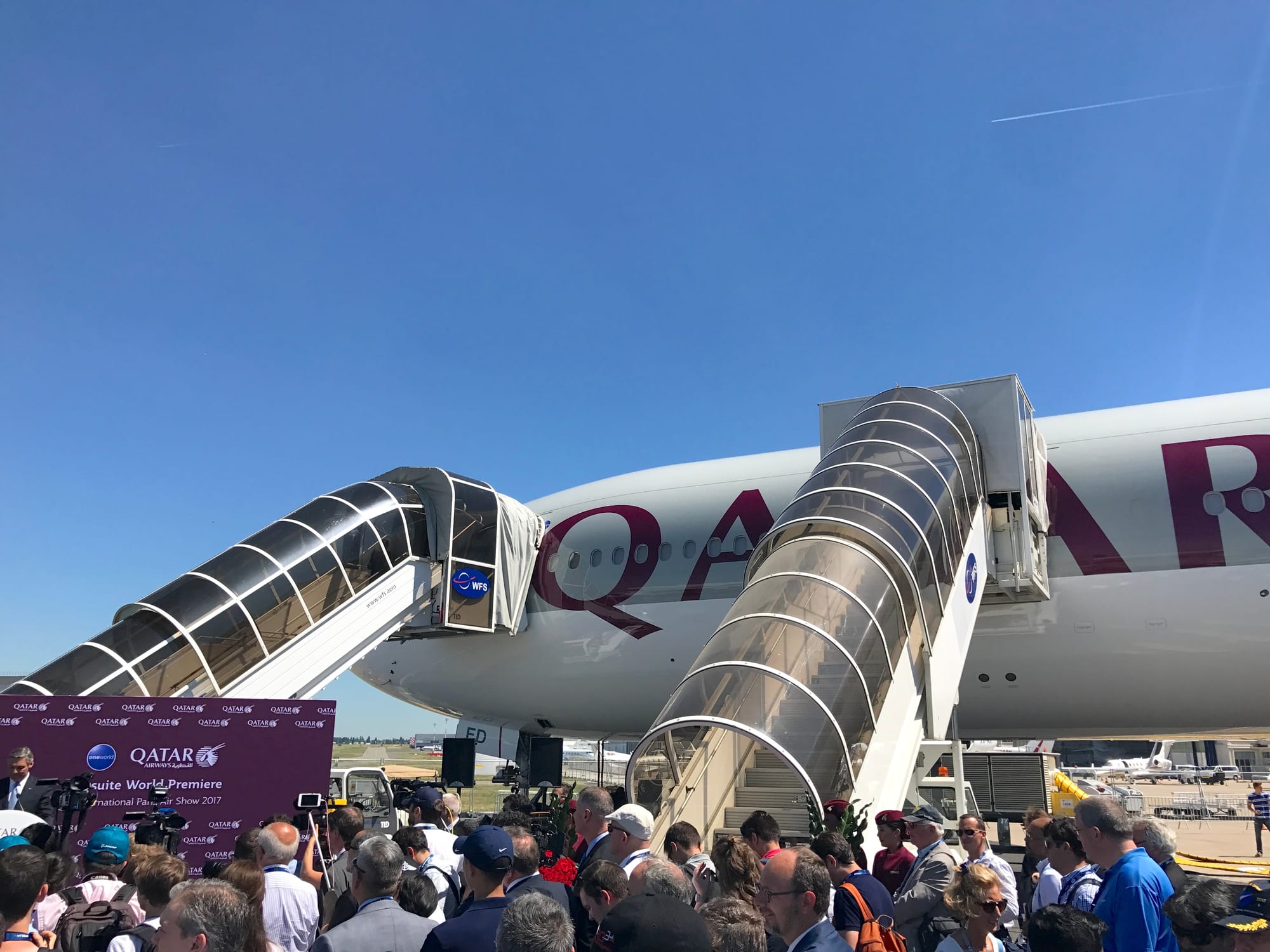
And that paints quite the symbolic irony for the show: with everything else going on at the show, what else could Boeing have brought to the show, or show off there? Cathay Pacific comes to mind, in the middle of an impressive retrofit of its 777-300ERs with its new Aria seat and updated cabins further back, but with demand for the new seats likely wants to keep them in service.
Yet Boeing itself is demonstrably enthusiastic to get into the retrofit market via its Boeing Global Services outfit. Is there space for a mockup with multiple concept BGS refit cabins, essentially a mobile version of the cabin option mockup space inside its customer experience centre?
With the growing importance of offering strong refit cabins for early 787 models it might reap benefits, and avoid the impression that Boeing doesn’t have anything more to show off in the static area than a 10-year-old example of a 21-year-old model of a 30-year-old airplane, featuring an 8-year-old last-generation cabin inside.
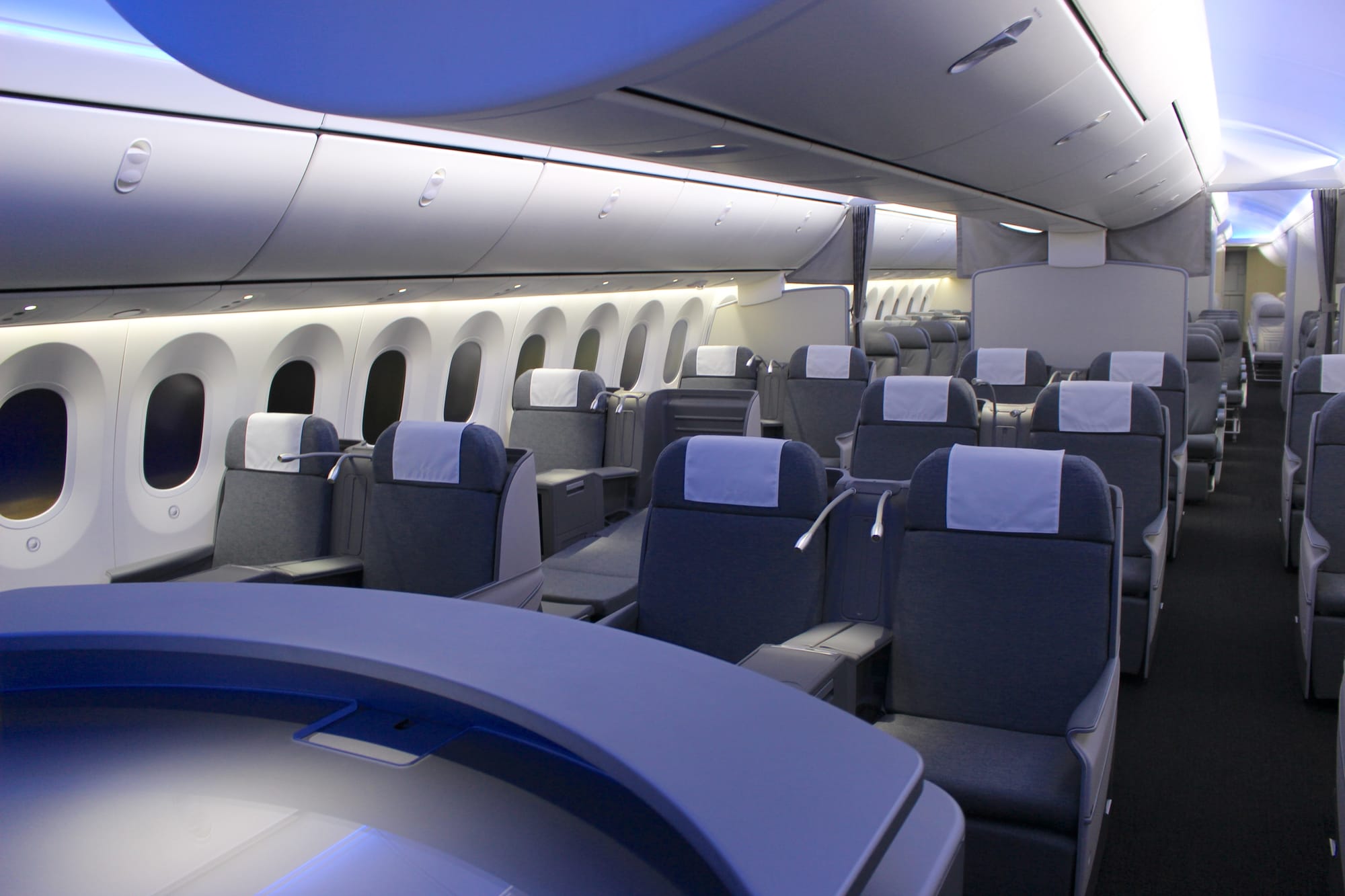
Boeing’s production capacity and certification capabilities are the key questions at this point
Before the 2020s, the bit story of each annual Paris or Farnborough airshow was the A versus B airplane order tally: who “won” the show, and which airplanes were more popular? But this decade, factors from COVID to safety to certification to production to full order books to geopolitical concerns have meant that neither show was really up for winning.
Each year’s show since the two cancelled 2020 and 2021 shows has felt almost more like a series of expectations-setting exercises, akin to a political debate: the equivalent in messaging terms of “all they have to do in order to have a good night is not fall over the podium”.
On the Boeing order side, what happens at the show will really be a question of how many years into the 2030s Boeing’s books will stretch, and those books are already bursting.
At currently planned production rates — well above the actual current production rates — all three current Boeing commercial passenger airplane programmes would be essentially full until well into the early 2030s:
- 777X
- 777-9
- 777-8
- 787
- 787-10
- 787-9
- 787-8
- 737 MAX
- 737 MAX 8
- 737 MAX 9
- plus the as yet uncertified MAX 7 and MAX 10
But the critical phrase there is “at currently planned production rates”: variation both up and down are entirely within the realms of possibility, on all three programmes — all of which are experiencing some form of production issues, certification problems, regulator restrictions, or a combination of the three.
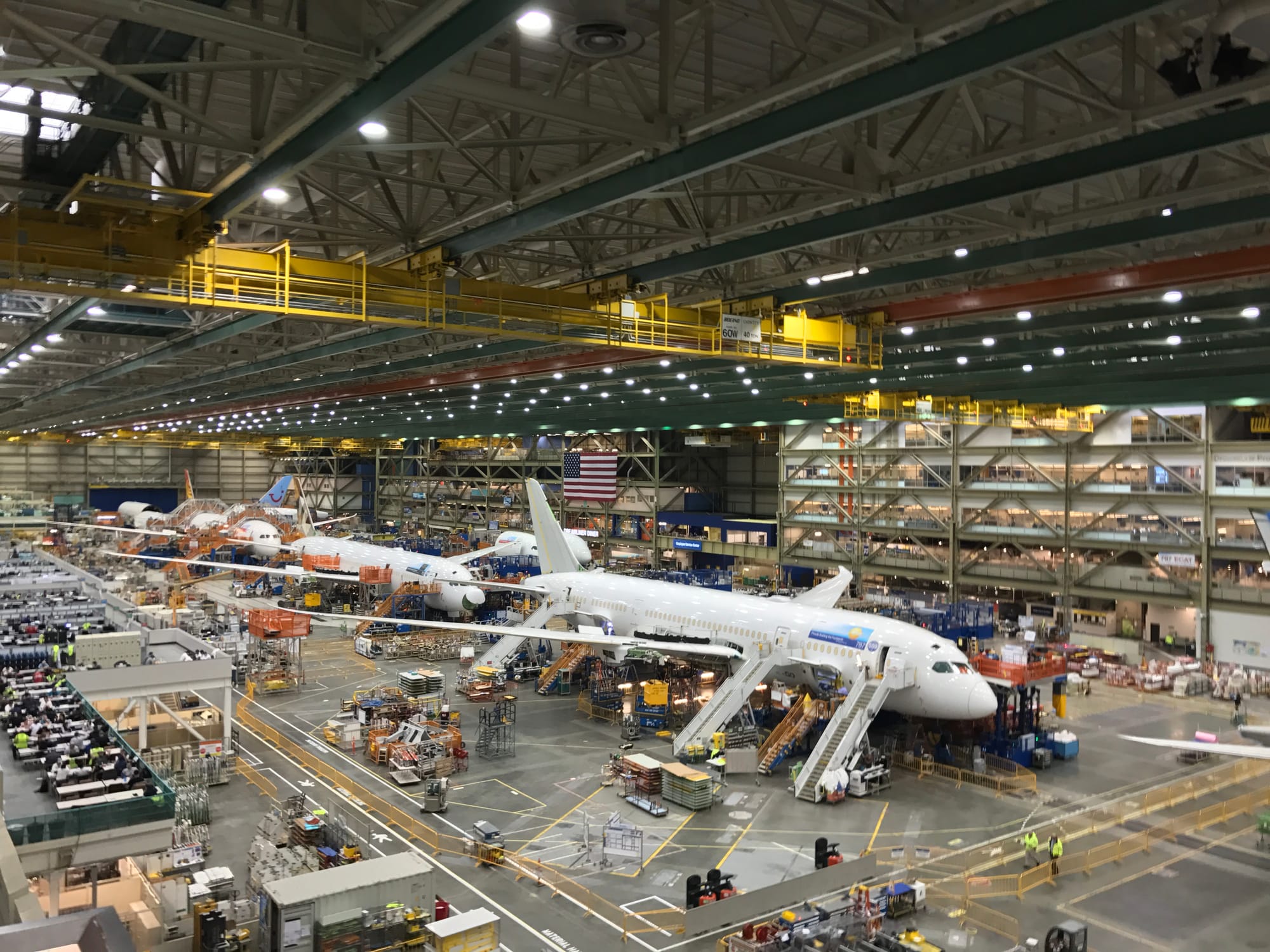
Let’s start at the top of the capacity ladder and work down.
The 777X is not yet certified or in full production. At its maximum production rate peak of the second 777 generation (in other words, the 777-300ER and -200LR) in the early 2010s, Boeing was delivering some 100 aircraft per year, or just over eight per month. That was in many ways the end of the golden “21st Century Jet” era at Boeing, which is today a very different company. It would be a brave forecaster who would predict a return to anything similar for the 777X in the medium term, not least because that was a good decade into production of the second-generation aircraft, themselves a substantially less ambitious and technically challenging set of changes than the jump to the 777X.
On to the Dreamliner. Boeing maxed out at a 13 per month annual average in 2019 — a number that must come with big caveats around production quality — and has struggled to approach anything like that rate since. The big question is the speed at which Boeing might be able to reliably produce 787s up to quality standards at anything approaching that speed. For reference, the initial acceleration of Dreamliner production took more than half a decade to get up to the 2019 peak from a rate similar to current Dreamliner production. Could it do so again? Maybe.
Boeing has never produced more than 50 of any 737 family per month (on a yearly average), peaking in 2018, and it is currently limited by regulators. The Air Current reports it just hit rate 38, behind its own timeline. It hopes to be permitted to raise to rate 42, then rate 47, at six-month intervals, but this is dependent both on the supply chain (a factor in the delays to rate 38) and on regulators.
Boeing doesn’t really have a next generation airliner to offer in any category. Nor, even before AI171, did it have plans to publicly discuss anything more than getting its three existing programmes back on track.
The risks for Boeing are huge here.
If it can’t certify and produce the 777X in time, it risks losing customers and prospective customers to the A350-1000 and a notional A350-2000.
If it can’t return confidence to the 787 programme and build them fast enough, it risks losing customers and prospective customers to the A330neo and A350, or at least having them dual-fleet with those aircraft, or use them as interim lift.
If it can’t continue to increase the 737 MAX production rate while certifying the 737 MAX 10 and MAX 7 — and if Airbus can resolve its supply chain issues, especially around engines — it will lose and prospective customers to the A320neo on the upper end of the market and the A220 on the lower end.
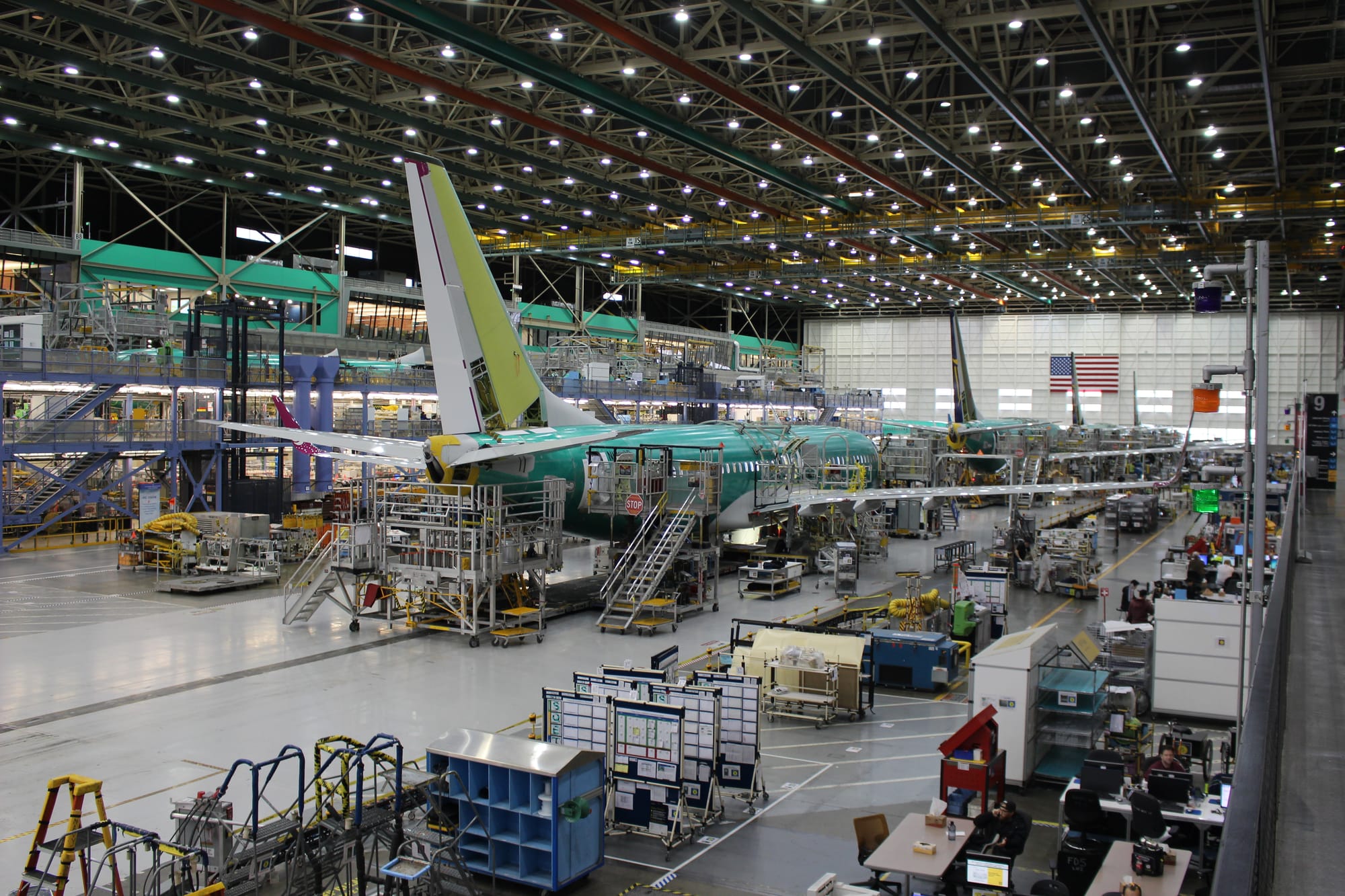
And that’s not even talking about the geopolitical questions of China being in a trade tariff war with the US, tariffs, or anything else over which Boeing does not have control.
Boeing’s passenger experience focus is currently the 777X cabin, which is probably right
Boeing’s initial delays to the 787 programme had many knock-on effects, but one particularly visible issue within the passenger experience world was that the cabins initially ordered for the Dreamliner — many via catalogue — were finalised so far before their departure from the final assembly line that they were outdated on first flight.
Clearly, Boeing is keen for this not to happen again with the 777X, and neither are airlines, which have taken pains to pull forward new cabins to retrofit older aircraft (as in British Airways’ new first class, which will début on the A380) or deploy them on other linefit widebodies (as in Lufthansa’s Allegris, which rolled out on the A350).
For its part, Boeing is continuing to develop its cabin options for the 777X, especially around cabin customisation and branding options that go beyond areas where the airframer would previously have involved itself. This is, on balance, an excellent move, and Boeing has a strong team doing great work here, despite (or, indeed, in spite of) the backdrop of programme delays to the 777X.
At the Aircraft Interiors Expo a couple of months ago, Boeing’s main focus remained on the 777 cabin, with a new set of elements for airlines to consider including ceiling panels, e-ink decoration as part of branded welcome areas, and monument branding panels at the rear of the cabin.
The idea is that, essentially, airlines can add elements of their brand palette — a secondary pattern, for example — to ceilings and galley walls in order to differentiate their aircraft, and that Boeing would like a piece of that differentiation pie, which might previously have gone to companies like ABC International, well known for its branding panel work, most recently for LATAM.
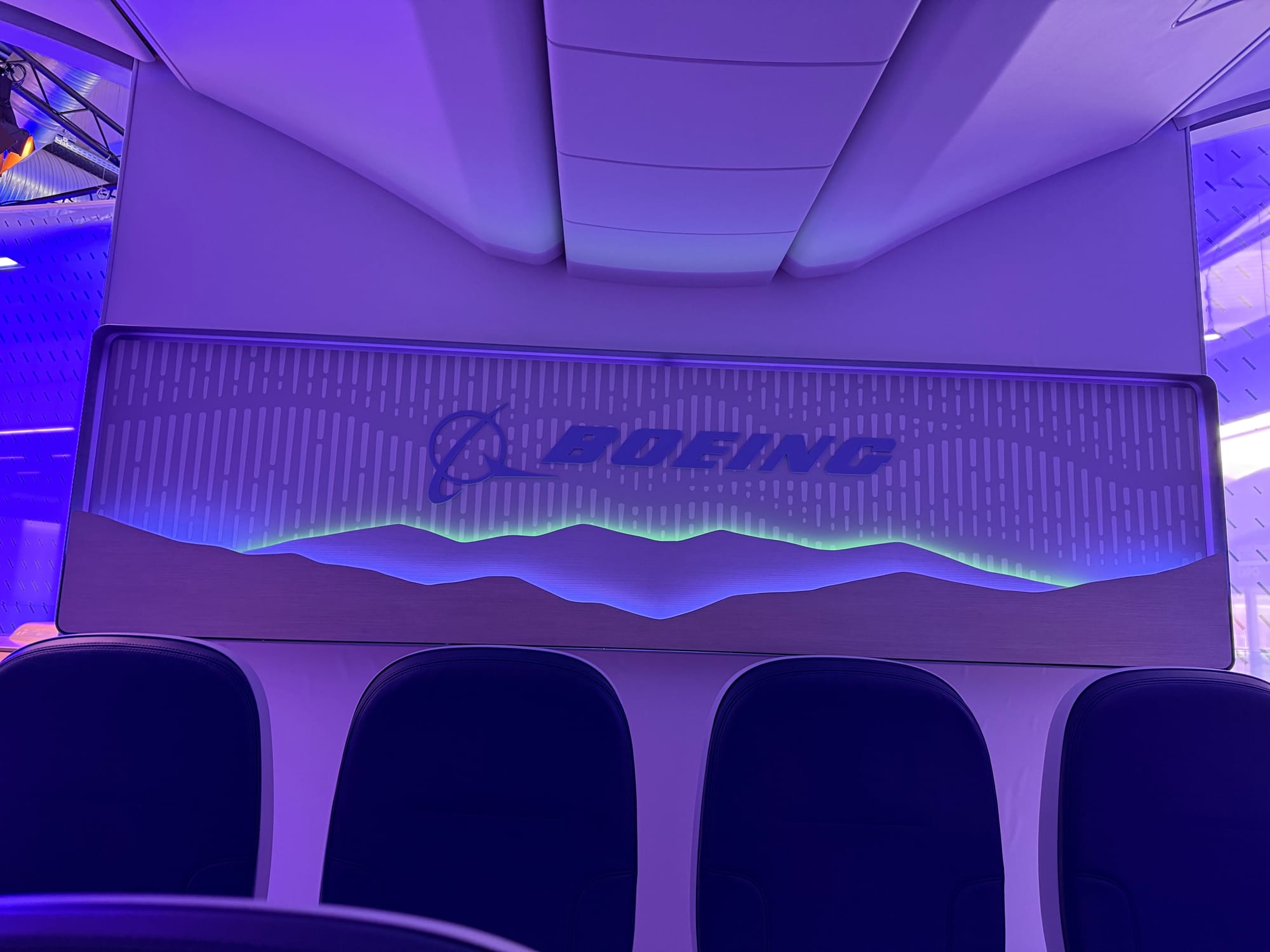
There are questions, of course, about the market for this level of differentiation. It has been a rare airline that has customised any of the overhead lit diamond patterns on Airbus’ Airspace cabins across the A320neo, A330neo and A350 aircraft families.
That said, Airbus has — unwisely in my view — leaned too far into the realms of the highly unlikely with its cabin concept renderings, showing off nonsensical ideas like no-monument cabins or business class seats opened directly up to galleys.
Boeing’s approach, meanwhile, is to show real-world options, like shifting galleys and other monuments forwards and backwards around doors 2 in order to enable density optimisation in business class.
But will hardshell thermoplastic customisation of overhead ceiling panels and galley sidewalls catch on? That depends on the cost and ease of replacing it at aircraft transition, particularly for those airlines reliant on lessor aircraft. Lessors won’t want the added time and expense to start pulling down the ceiling or replacing galley walls. But can I imagine Emirates extending its ghaf tree motif, or Singapore Airlines adding its updated batik motif? Absolutely.
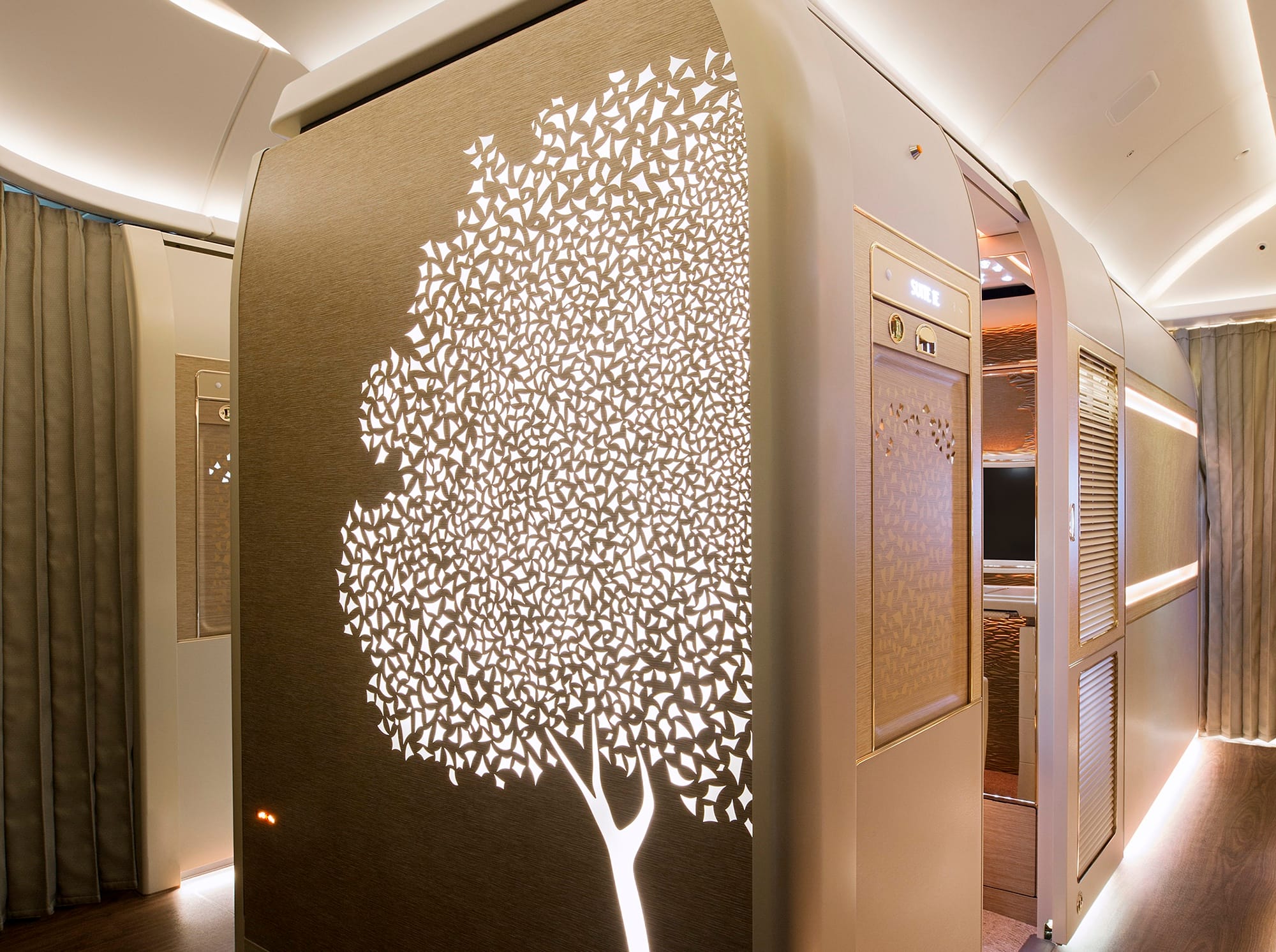
Everyone wants customisation and differentiation in their cabins, but is this a technology question?
Every airline, of course, is not a Singapore Airlines or an Emirates in terms of branding and customisation appetite, ability and budget. So it was interesting to observe Boeing — and tier 1 supplier Diehl — exploring e-ink technology this year, and talking about it in terms of being an updatable customisation feature.
In previous years, large TV-style screens (of various flavours of LED, including OLED and QLED) have been proposed for use as big non-safety information panels on what are currently monuments that either have static branding elements (logos, textured walls, and so on, the sort of thing found at a modern doors 2 entryway area) or are simply standard galley monuments.
Yet this year seems to mark a technology turning point. The LG-Lufthansa Technik joint venture AERQ shut down in November. The 2024 Boeing stand at AIX included its Perch concept, then branded by Boeing’s Encore subsidiary, that featured large LED-type screens providing information and decoration — with LG involvement too — while Perch itself did not appear at AIX 2025, narrowbody version that essentially shines through a wood-effect panel featured at as part of the 737 mockup this year.
Instead, Boeing’s customisation technology pivoted to e-ink, initially popularised by e-readers for e-books, but now also commonly seen in stores for live-update item pricing and merchandising. These were shown as part of the wave effect on the doors 2 entryway welcome area of the aircraft, between business and premium economy in the example layout.
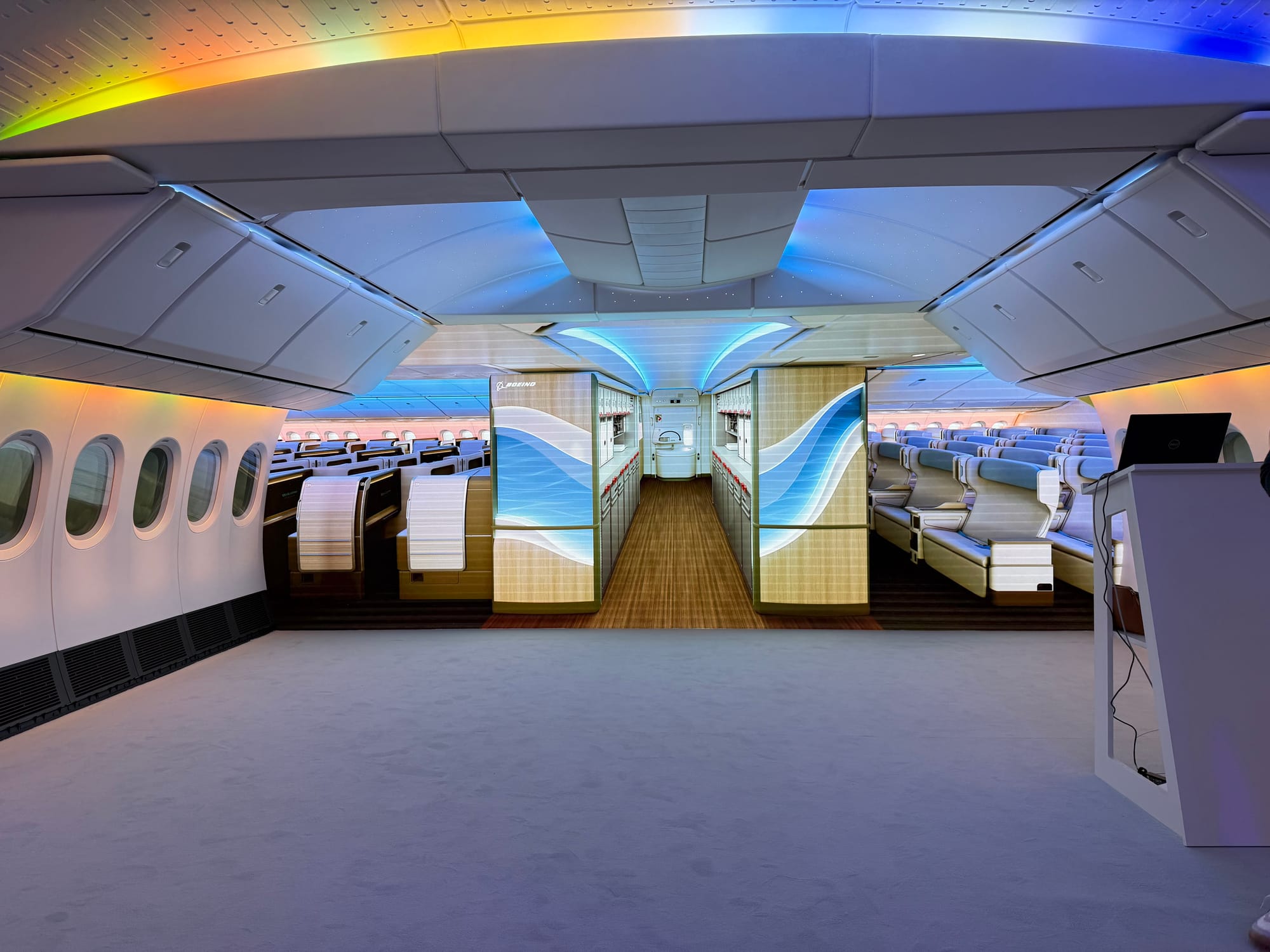
Boeing’s e-ink concept included eye-pleasing design, adding depth and interest to an increasingly three-dimensional set of decorative elements that seemingly intrigue passengers yet will likely make cleaning staff and maintenance managers wince.
Diehl’s version was substantially more elaborate, replacing entire sidewalls and bulkhead panels with e-ink, including both decoration — with options from the subtle to the increasingly eyewatering — and non-safety critical information such as wifi availability.
To be abundantly clear, this exceedingly lurid set of transitions was to demonstrate the capacity of the technology, not as a proposal for Migraine Airways. View with caution. Video: John Walton
The prospects here are really impressive once you start to think about them. While lit safety placards for exits, seatbelts and so on will likely always be required, there is a wealth of useful from useful yet non-critical information that can be shown to passengers on bulkheads, monuments or sidewalls, including:
- boarding information including seat location and wayfinding guidance
- lavatory status
- wifi availability
- current time at departure and arrival, as well as the planned time for the next meal service
- flight updates and landing time
- arrival gate
- connecting information for transit passengers
- advertising, onboard sales opportunities and other calls to action with QR codes
Of course, hard-wiring new technologies into the cabin is fraught with difficulty, with many a shipwreck lining the narrow path between the Scylla of technology and the Charybdis of obsolescence.
Camera connection points that no passenger ever used, sockets for passengers to connect their iPods being eclipsed before rollout by the arrival of the Lightning cable, cellphone holder slots immediately rendered too small by the arrival of the phablet form, 0.5-amp USB-A sockets being installed years after that level of power output was essentially useless, wireless charging pads of early standards that don’t even maintain the charge on a phone: all things that at one point seemed like a great idea.
But that doesn’t mean the passenger experience industry shouldn’t try. With just two months between AIX and Le Bourget, it’ll be fascinating to see any changes to Boeing’s airline, passenger experience industry, and general public messaging around these technologies — and, indeed, its cabins and mockup.
Editor’s note: this article was updated to correct a detail around Boeing’s OLED work: while the widebody Perch concept did not make it to AIX, an updated OLED element did, as part of the 737 mockup.
Make sure you’re subscribed to The Up Front for all our on-the-ground news and critical industry intelligence from the Paris Air Show — including our daily live feed, flash audio updates, nightly readouts, and much more.

